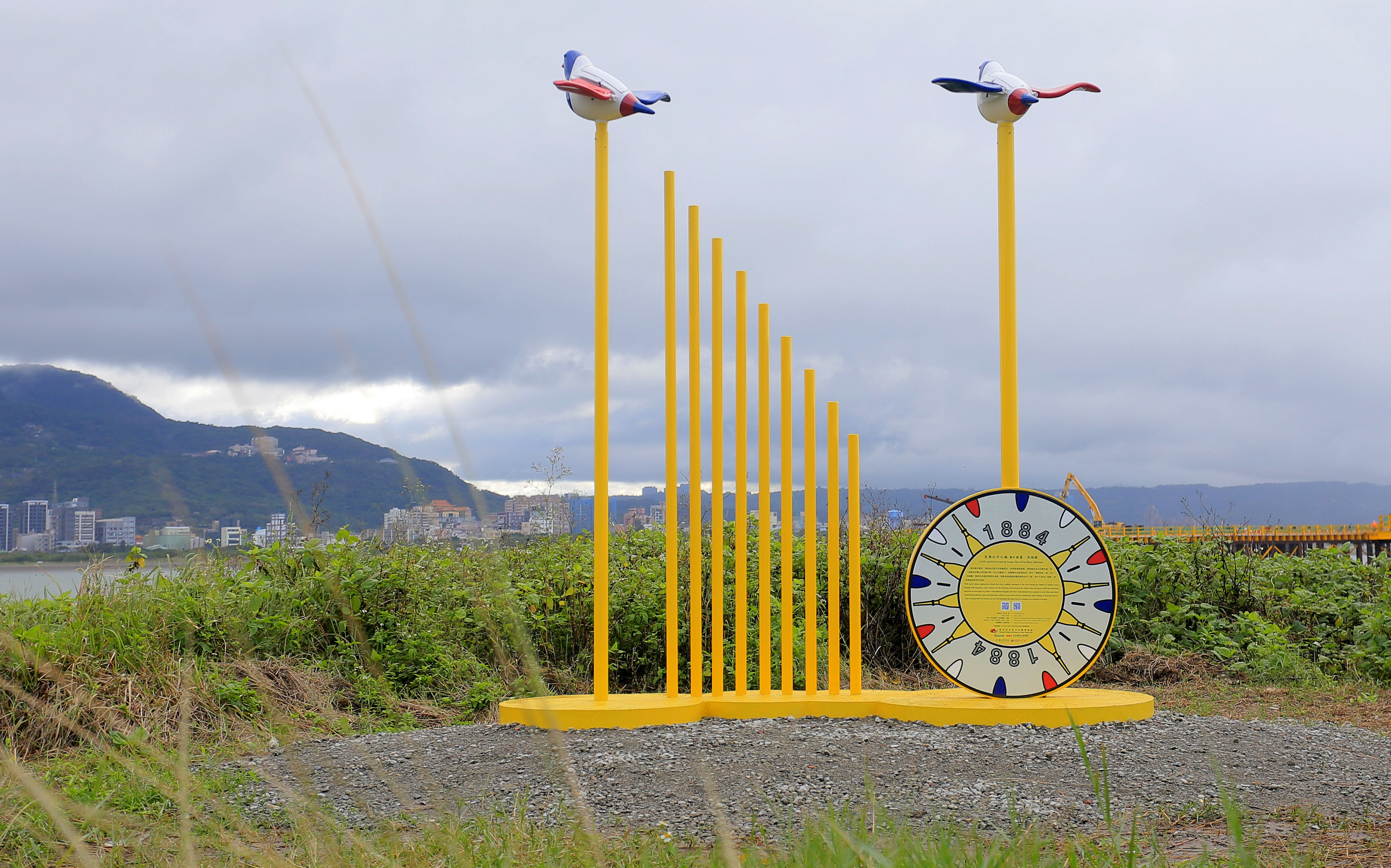l 現場實景

l 最初設計手稿

l 設計理念
以「鴿子」造型,象徵現代社會的「愛與和平」景象,藍、白、紅色的圓形圖騰,象徵清法軍交戰的砲口,鮮豔的黃色則隱喻過去清軍的黃龍旗,也是皇帝色系的代表。期盼觀者在此能透過此意象,回望過去在此地發生的戰爭景象,同時珍惜歷史推演下得來不易的和平現況。
l 歷史表現說明
1884年清法戰爭滬尾之役爆發,清軍派兵駐守淡水河岸附近的「白砲臺」,負責監看水雷阻隔線,阻隔線佈局於淡水河口最窄處,如有敵軍來襲,監看者會立刻引爆水雷,防止法艦進入。
如今已不復存在的「白砲臺」意象,在此轉化成象徵自由、和平、博愛的紅、藍、白三色圖騰,頂上駐足的愛與和平之鴿,紀念著曾在此地發生的戰事,歌頌著新的和平記憶。
l Artist’s Statement
Overlooking the narrowest part of the estuary of Tamsui River, Fort Blanc was built to defend enemy warships. With naval mines deployed to block the river, soldiers stationed in the Fort during the Battle of Tamsui were charged with keeping a close watch over the blockade and detonate the mines when necessary. With the blockade depicted as steel pipes in yellow with different heights, the fort is transformed into a pattern in red, blue and white symbolizing liberty, peace and fraternity, while the two doves of love and peace, each looking at historical traces and swaying with sea breeze, are not for blockade this time but for creating new imprints of peace.